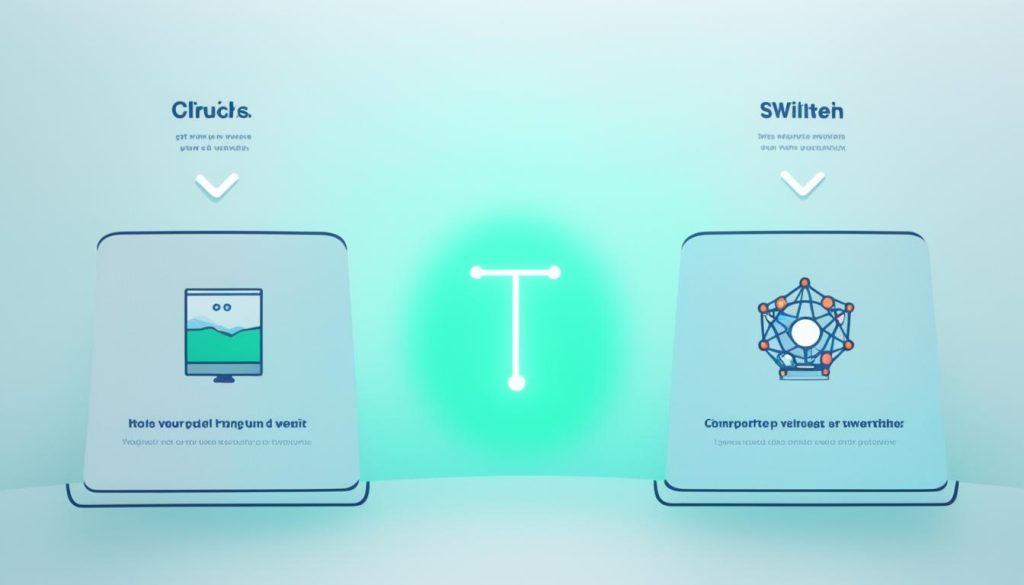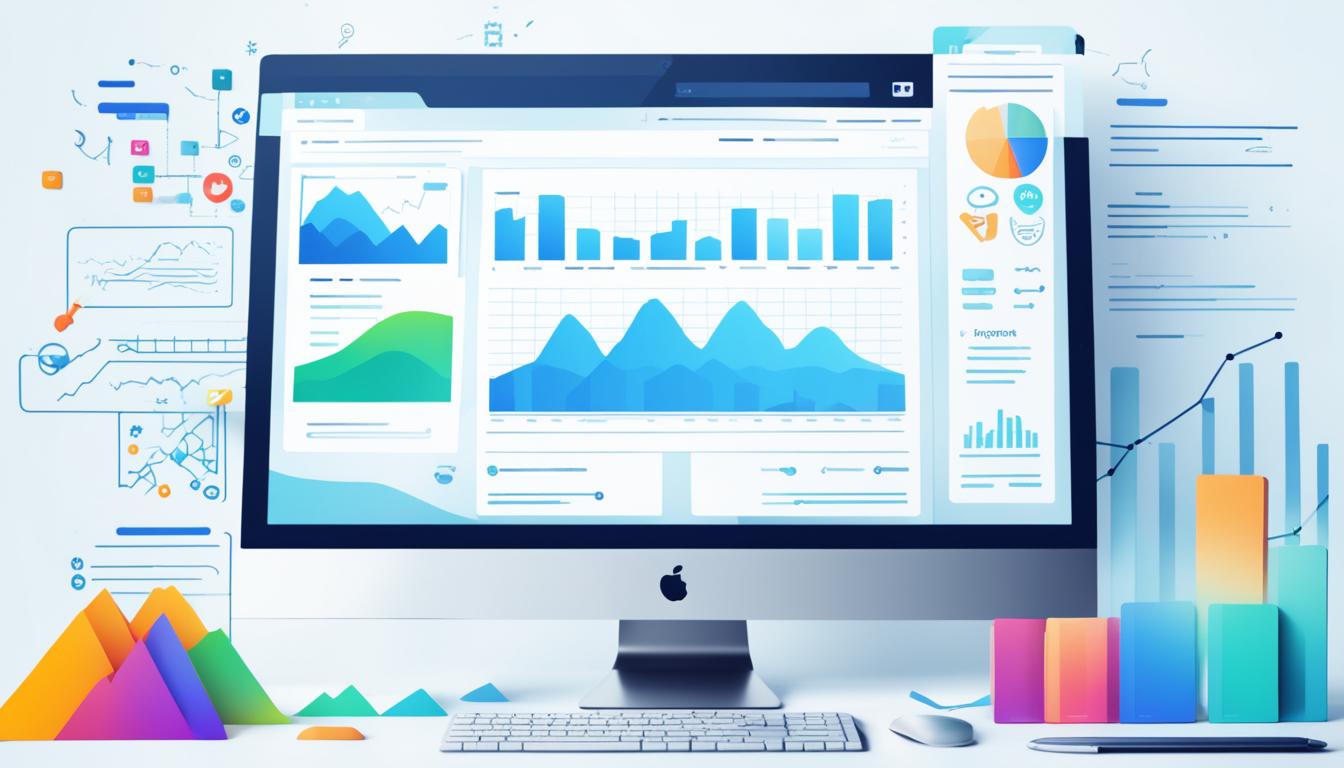Are you relying on guesswork to optimize your website’s conversion rates? What if there was a data-driven approach that could bridge the gap between assumptions and accuracy?
A/B testing, also known as split testing, is the key to unlocking the full potential of your digital marketing efforts. By comparing different variants of your web pages and analyzing user behavior, you can make informed decisions that lead to higher conversion rates.
So, how can you master A/B testing to achieve optimal results? Let’s dive in and explore the world of website optimization, conversion rate optimization, and the power of online experimentation.
Key Takeaways
- A/B testing is a powerful technique for optimizing conversion rates in digital marketing.
- It allows businesses to make data-driven decisions based on statistical analysis.
- By comparing different variants of web pages, businesses can understand user behavior and improve website performance.
- Hypothesis generation and clear conversion goals are essential for successful A/B testing.
- A/B testing tools enable businesses to execute tests, track user interactions, and analyze data in real-time.
Understanding A/B Testing
A/B testing is a dynamic process that involves comparing two or more variants of a web page, email, or other digital content. Its significance in the context of conversions is paramount, as it allows businesses to move beyond assumptions and understand what truly resonates with their audience.
By analyzing the impact of individual elements such as design, content, and user experience, businesses can optimize their assets and increase conversion rates. A/B testing provides a systematic approach to customization, enabling businesses to adapt to changing user preferences and improve the effectiveness of their digital presence.
In today’s highly competitive online landscape, conversion optimization is essential for businesses to thrive. A/B testing empowers organizations to make data-driven decisions based on actual user behavior, rather than relying on guesswork. This methodical approach helps businesses pinpoint what works and what doesn’t, allowing them to refine their strategies and increase conversion rates.
User Behavior and Website Customization
Understanding user behavior is a fundamental aspect of A/B testing. By examining how users interact with different variants, businesses can gain valuable insights into their preferences and expectations. This knowledge can then be used to customize websites, emails, and other digital assets to align with user preferences and improve conversions.
Through A/B testing, businesses can experiment with various combinations of design elements, content placement, calls-to-action, and more. By evaluating user response and tracking conversion rates, businesses can identify the most effective strategies and optimize their online presence accordingly.
Increase Conversion Rates with A/B Testing
A primary objective of A/B testing is to increase conversion rates. By optimizing elements of a website or digital campaign, businesses can create a more compelling experience for users, boosting their likelihood of taking a desired action.
Whether it’s improving the layout, refining the messaging, or optimizing the overall user flow, A/B testing provides a scientific and data-driven approach to achieve better results. By analyzing the outcomes of A/B tests, businesses can make informed decisions and implement changes that lead to higher conversion rates and ultimately, increased revenue.
To illustrate the potential impact of A/B testing, consider an e-commerce website looking to optimize its checkout process. By testing variations of the checkout page, they may discover that a simplified form layout leads to higher completion rates and increased revenue.
“We found that by reducing the number of required fields in our checkout form, we saw a significant increase in completed transactions. This simple change resulted in a 25% boost in our conversion rates within just one week of implementing the optimized version.”
As demonstrated by this example, implementing A/B testing with a focus on conversion optimization can lead to tangible improvements in business performance.

Preparing for A/B Testing
Before conducting A/B testing, it is essential for businesses to establish clear conversion goals and define the specific outcomes they intend to optimize. By identifying these goals, you provide a clear direction for your testing efforts and ensure that success criteria are defined. Defining conversion goals helps focus your testing strategy and aligns it with your overall business objectives.
Once you have defined your conversion goals, the next step is to generate hypotheses. Hypotheses are educated guesses or assumptions about the changes you want to test. These hypotheses should focus on specific elements that you believe can impact user behavior and conversion rates. They can be based on data analysis, user feedback, or creative insights.
Creating a comprehensive testing plan is also crucial for successful A/B testing. Your testing plan should outline the variations you will test, the target audience for each option, and important factors such as testing length and output size. A well-designed testing plan ensures a systematic approach, allowing you to test different variables and compare their performance accurately.
Statistical significance is a critical aspect of A/B testing. It ensures that the results you obtain are not due to random chance but rather reflect a meaningful difference between the variants tested. In statistical terms, it helps determine whether the observed differences in conversion rates are statistically significant or simply a result of natural variability. By ensuring statistical significance in your A/B tests, you can have confidence in the validity of your findings and make data-driven decisions.
Preparing for A/B testing involves setting clear conversion goals, generating hypotheses, creating a testing plan, and focusing on statistical significance. Through thoughtful preparation, you can optimize your testing efforts and maximize the effectiveness of your conversion optimization strategies.

“The testing plan is a roadmap for our A/B testing efforts. It helps us organize and structure our tests, making sure we gather meaningful data and derive actionable insights.”
– Jane Smith, Digital Marketing Manager at ABC Company
Executing A/B Tests
Once the preparation is complete, you can proceed with executing A/B tests. The first step is to choose the variables to be tested, such as headlines, images, call-to-action buttons, and layout options. These variables play a crucial role in determining the effectiveness of your digital assets in driving conversions.
Utilize powerful A/B testing tools or platforms to set up the experiments. These tools allow you to duplicate the original version and create variations, where you can apply the desired changes to each variant. By using these tools, you can streamline the testing process and ensure accurate and reliable results.
It is essential to run the tests for a set period of time to gather sufficient conversion data. During this time, track user interaction and engagement closely to gain valuable insights into audience preferences. A/B testing tools often provide real-time data analysis, allowing you to evaluate the effectiveness of each option and identify the winning variation quickly.
By following a systematic approach to A/B testing, you can make data-driven decisions that lead to tangible improvements in the performance of your digital assets. This optimization approach helps you uncover the variables that have the greatest impact on conversion rates, enabling you to optimize your website or marketing strategies effectively.
FAQ
What is A/B testing?
Why is A/B testing important for website optimization and conversion rate optimization?
How does A/B testing help businesses increase conversions?
What steps should businesses take to prepare for A/B testing?
How do businesses execute A/B tests?
Source Links
- https://www.linkedin.com/pulse/maximizing-conversions-ab-testing-uncover-what-works-best-your
- https://landingi.com/conversion-optimization/best-ab-testing-tools/
- https://conversion-rate-experts.com/cro-tips/
